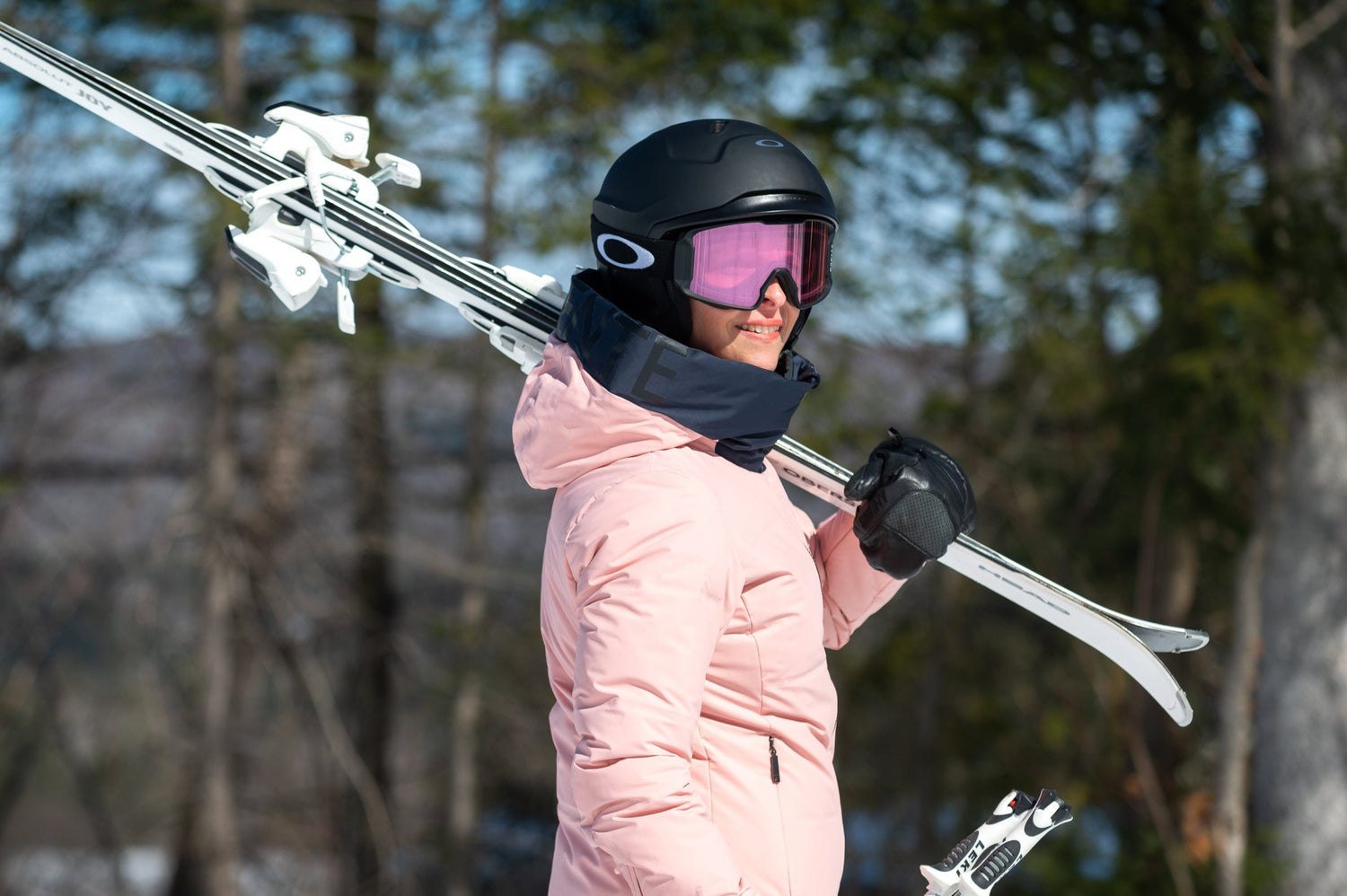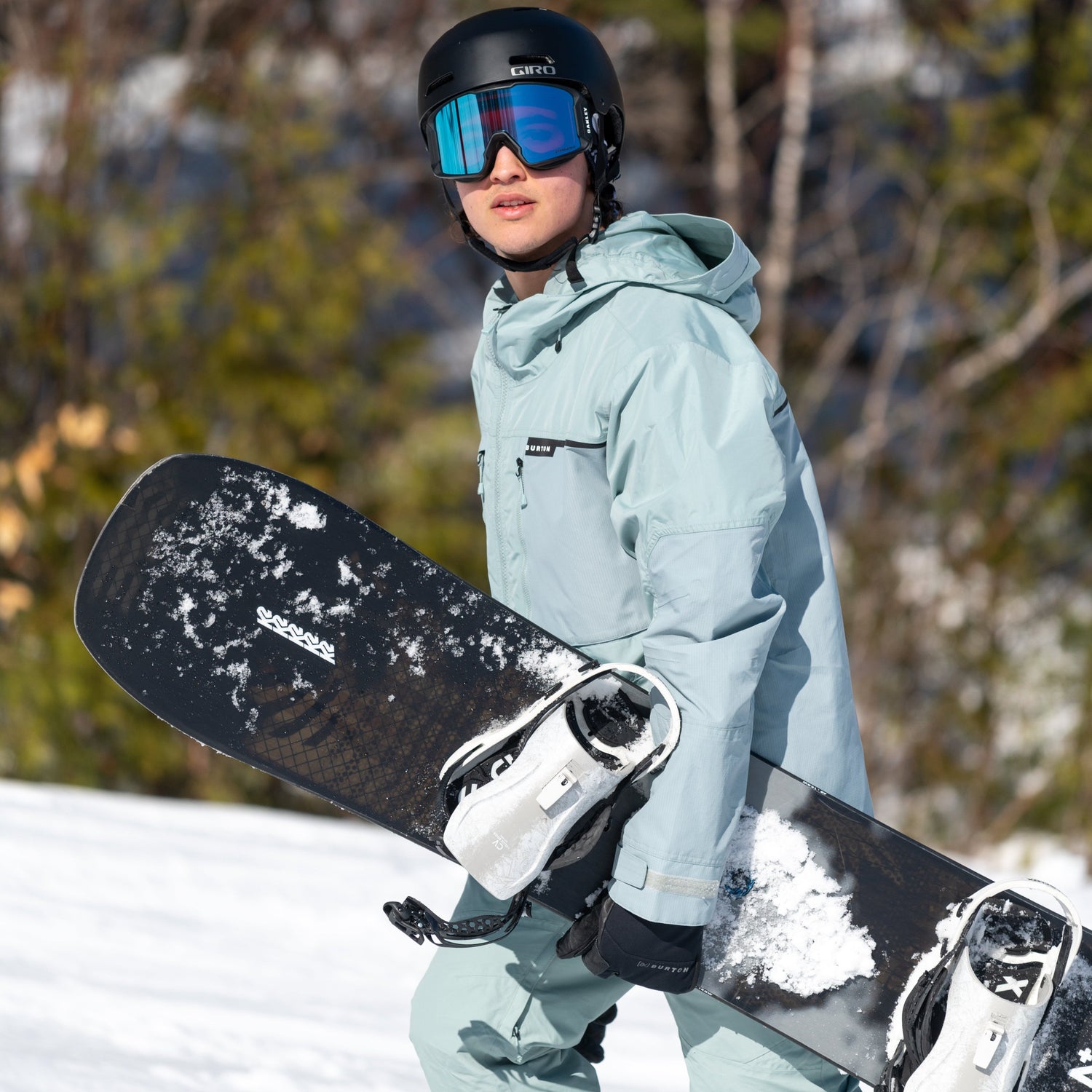Alpine skiing has evolved greatly since its debut in North America in the nineteenth century. Originally, all skis involved free-heeled travel in a technique much like modern classic cross-country skiing. With the advent of lifts in the 1930s, alpine ski designs split off from touring skis. No longer constrained by the uphill climb, they were able to evolve into the alpine skis we know today.
The alpine touring renaissance began in the 1990s and then exploded in popularity during the pandemic when lift-served slopes were sometimes closed or subject to crowd size restrictions. Although both sports involve gliding down the mountain and getting a rush of adrenaline while doing so, there are big differences on how to get up the slopes and the kind of terrain being explored! Backcountry adventurers and slopes skiers have very different needs when it comes to equipment.

Skis and Skins
Ski resorts offer a wide range of terrain for all levels of skiers. From the groomed trails to the mogul fields and skiing in the woods, the type of skis you choose depends on the type of skier you are, your level of expertise, weight, etc. In short, a plethora of essential characteristics must be taken into consideration in order to help you have the best experience possible. Piste and all-mountain skis are good options, a 70 to 75 mm waist width will allow you to leave your mark as you carve the freshly groomed surface and a 76 to 84 mm waist is ideal for an all-mountain ski. Freeride skis have a 88 mm plus waist, they will be your best bet in the woods or when the storm of the century hits your neck of the woods! Explore this subject in more detail in our article on alpine skis.
Touring skis follow the same trend: there are some for every style and terrain—wide skis for pow, narrower skis for alpine terrain and corn snow, and relatively burly skis for freeriding. Whatever the type of touring ski, they’re lighter than their resort-oriented counterparts because skiers need to carry themselves and their gear to the top under their own power. Usually, the lighter the ski the better they are at climbing and the worse they are at descending and vice versa. As with alpine skis, wider skis have more float in powder, but it’s easier to go from edge to edge on narrower ones. If you want a good all-round ski, mid weight skis (1,300 g to 1,650 g) with a 95 to 105 mm waist is the way to go to enjoy the powder, hardpack, woods and steep terrain. To learn more, see our article on AT skis.
To reach the much-coveted summit, skins must be used under the skis. They are made of mohair and/or synthetic fibers, which give you both grip and glide. Synthetic skins have the best grip for climbing while blends have superior glide.
Bindings
Alpine skis usually feature a rail system on which the binding is mounted. Alpine bindings have one goal: going downhill! They have an elasticity in the toe that acts like a shock, absording impacts and dampening vibrations. Furthermore, they’re designed according to international safety standards to release your boot during a crash to help avoid serious injuries. For more information, read our article on alpine bindings.
Alpine touring bindings have a different goal: going both up and down the mountain. Most bindings these days are tech bindings. They allow skiers to have a free heel to climb to the top and then lock down their heels for descents with alpine turns. These bindings feature a pin system that hold the touring boots in place. These bindings don’t have much elasticity (if any) and don’t comply with the same safety standards, so they’re not a safe or enjoyable choice for a day of lift-served skiing.
In the past few years, hybrid bindings—which can be used for resort and backcountry skiing—have been available on the market. The famous Shift by Atomic is a pioneer in the field. Such bindings have a similar performance to alpine bindings and are light enough to ascend efficiently. Read all about this topic in our article on AT bindings.
Boots
Alpine ski boots come in a wide range of models. Various flex ratings and widths are available. Burlier and slightly heavier and with a forward lean angle, alpine ski boots are designed to offer the best possible experience at the resort. Read more about alpine boots in our article.
Most people go with one of the two most popular touring options. First, the 100% touring boot features a tech insertion system: two small holes at the front of the boots to clip it onto the bindings. They’re lighter for easier climbing and are designed to perform off-piste in soft snow.
The second popular option is a hybrid boot. It fits on both alpine and touring ski bindings. They also feature a walk mode. They’re a bit heavier on the skin track and usually don’t have the same range of motion in the upper cuff. That said, they do climb efficiently. On the way down—even on-piste—they almost perform like a pure alpine boot. They offer the best of both worlds! Learn more in our article on AT boots.

Poles
Poles are essential when it comes to both alpine skiing and alpine touring. For the latter, they should be adjustable, light and equipped with powder baskets. They can also be used at the resort.
Price
Let’s talk budget! The average cost for mid-range to high-end alpine ski equipment (boots, skis, bindings and poles) is $1,500, while a touring setup (skis, boots, bindings, skins, and poles) usually comes in at a bit under $3,000. Of course, keep in mind that with touring, you won’t need a lift ticket.
Whether you want to try your hand at touring or start alpine skiing, the advice of an in-store expert is critical to help guide your decisions. Versatile equipment that allows you to ski at the resort and in the backcountry is an appealing option, especially in Eastern Canada. Exploring the mountains with the right equipment is your best gift you can give yourself.




